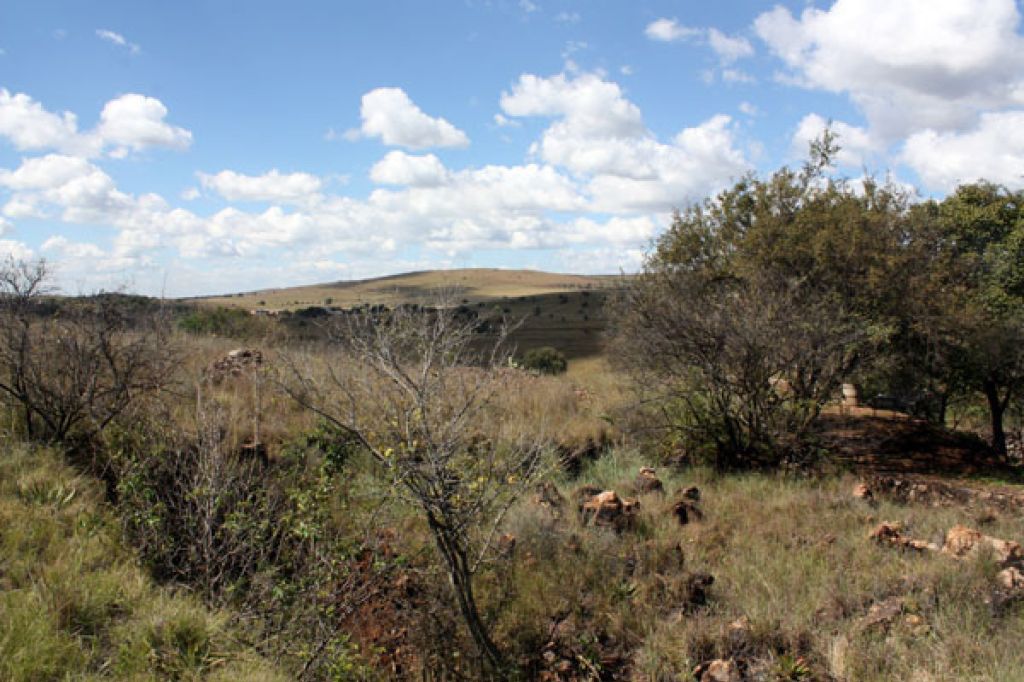5 reasons you need to do the Swartkrans Walking Tour
A unique experience awaits visitors at the Cradle of Humankind every now and again – a Swartkrans walking tour. Here's why it's unmissable.

1. It's a rarity
Swartkrans, nestled in the Cradle of Humankind, is actually a world-famous scientific site. It was designated a UNESCO World Heritage Site in its own right in 1998 and is also the site of an active palaeontological dig. That’s right – prominent researchers and scientists from around the world are still finding fossils dating back millions of years here. That’s why it’s normally closed to the public.
Once or twice a year, however, a very small tour group is allowed into the area with a scientist for a first-hand experience of this quest to unlock answers to the world’s most compelling questions about evolution.
2. Swartkrans was where one of the most important sparks in the history of our hominid ancestors may have been struck
The oldest evidence of the controlled use of fire by hominids in Southern Africa was discovered at Swartkrans in the form of burnt bones that were dated as being at least a million years old.
The ability to use fire was one of the most critical steps in the evolution of humanity; it helped our ancestors stay warm, is thought to have sparked the development of language and culture, and protected them against predators (we’ll come back to this point later).
Research on the burnt bones at Swartkrans revealed that they had been heated to above 200˚C – above the normal temperature of a natural bush fire.
3. It will make you ponder the concept of survival as you never have before
“The Swartkrans Cave story, that gradually developed as my excavation progressed, was that both our early human ancestors [Homo ergaster] and our relatives … [Paranthropus robustus] were living in an open savanna environment there between two- and one-million years ago and that they regularly sought shelter near the cave’s entrance, probably on cold winter nights.
“Here they were preyed upon by leopards and sabre-toothed cats that consumed them in the deeper parts of the cave,” says eminent paleontologist, Charles Kimberlin, who has been involved in excavations at Swartkrans, on the Swartkrans palaeontological research website.
#fossilfebruary Paranthropus from Swartkrans with leopard puncture marks & leopard fossil #drimolenfieldschoolpic.twitter.com/mMOIn6LIBB
— Dr Andy I.R. Herries (@Ozarchaeomaglab) February 5, 2015Swartkrans contains the first evidence of this co-existence of two hominid lineages: Paranthropus robustus and Homo ergaster, sometimes known as early Homo erectus.
Paranthropus robustus, the larger species, lived between 2.5-million and 1-million years ago before dying out and was probably not directly related to modern humans. Most researchers believe the tools and burnt bones are the result of Homo ergaster activity. Theoretically, this ability to control fire made Homo ergaster less vulnerable to predators, while Paranthropus robustus continued to fall prey to the big carnivores that roamed the area.
Palaeoanthropologists also believe Homo ergaster was the first human ancestor to have made stone tools and this ability, combined with the ability to control fire, eventually allowed Homo ergaster to leave Africa and survive in colder, northern climates.
4. You get to pick the brain of a scientist
The Swartkrans tour group is led by Wits University researcher Dr Morris Sutton who has been working at Swartkrans for nearly a decade. Sutton, a native of Tennessee in the United States, specialises in the Earlier Stone Age and Middle Stone Age.
5. You also hike through the scenic Cradle and have a picnic
The group meets at another famous site in the Cradle of Humankind, the Sterkfontein Caves, and walk through this picturesque area to Swartkrans and back.
The scenery in the Cradle of Humankind World Heritage Site is the kind Instagram was made for. The tour includes a picnic. Don’t forget to wear comfortable walking shoes, and bring sunblock and a hat.
#sunset Cradle of Humankind, South Africa #MaropengSA #meetsouthafrica #southafrica #Gauteng
A photo posted by Tara Turkington (@taraturk1) on
The next tour is on 7 November 2015. Book here.